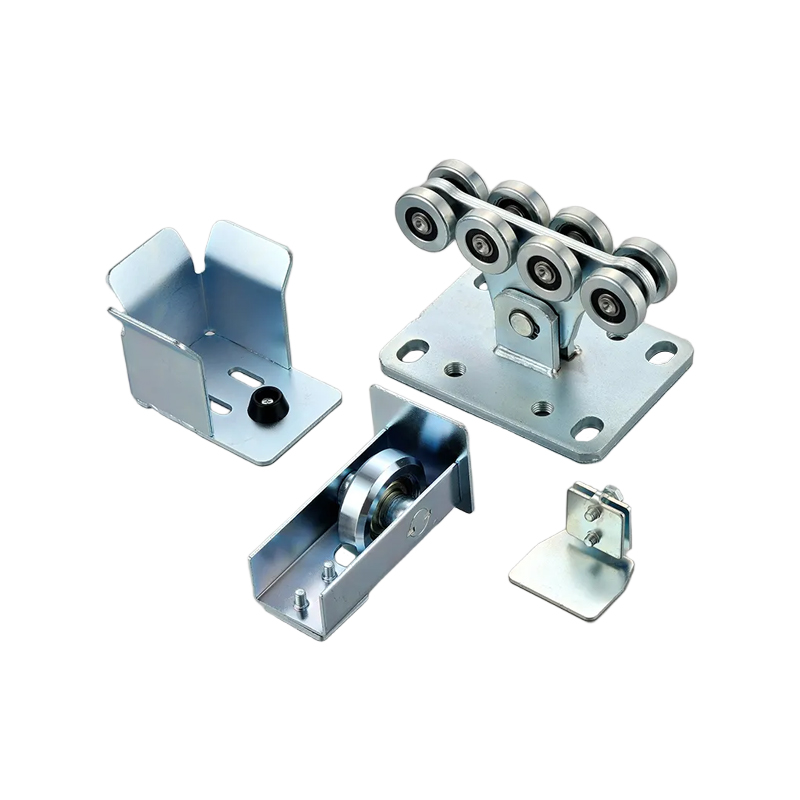No. 200 Gaoxin RD, Shanghua St, Lanxi, Zhejiang, P. R China
The High Precision Straight Teeth Rack Pinion Gear is a critical compo...
See DetailsFunctional gate and door systems depend on the quality and maintenance of their hardware components. Among the critical of these are wheels, which bear the load and facilitate smooth movement. In particular, spring loaded wheels for heavy gates and metal sliding door wheels play pivotal roles in different applications, from outdoor security gates to interior industrial or residential doors.

Spring loaded wheels are designed to absorb changes in surface height, reduce gate sag, and promote even weight distribution for heavy gates. They are especially useful for rolling gates installed on uneven ground. However, despite their benefits, common problems can arise without proper installation or maintenance.
1. Uneven Wear or Deformation
One frequent issue is uneven wear on the wheel surface or deformation of the spring assembly. This can result from improper alignment between the wheel and track or overloading the gate beyond its designed weight capacity. Regularly checking for misalignment and ensuring the spring remains properly tensioned can prevent premature wear.
2. Spring Fatigue
Springs can weaken over time, especially when subject to constant compression. Signs of spring fatigue include the wheel no longer making consistent ground contact or the gate sagging on one side. Periodic inspection and timely replacement of worn springs are key to preserving performance.
3. Obstruction and Debris Accumulation
Outdoor environments often expose gate wheels to dirt, leaves, or gravel, which can obstruct the wheel or wear down the mechanism. Keeping the track and wheel path clean will prevent jamming or uneven rolling.
Prevention Tips:
Ensure the wheel's load rating matches the gate's weight.
Lubricate moving parts with weather-resistant grease.
Choose zinc-coated or galvanized models for corrosion resistance.
Inspect hardware quarterly, especially in commercial or high-traffic applications.
Preventive maintenance and thoughtful installation extend the life of spring loaded wheels, downtime and costly repairs.
Metal sliding door wheels are widely used in commercial and residential doors, offering durability and reliable operation. When buying wheels for a sliding door, there are several critical factors to evaluate to ensure the performance over time.
1. Material Type
Metal wheels are commonly made from steel, stainless steel, or aluminum. Steel wheels are robust and cost-effective, but they may rust if not coated. Stainless steel, while more expensive, offers corrosion resistance—ideal for high-moisture environments. Aluminum wheels are lightweight and non-corrosive but may not support heavy loads.
2. Load Capacity
Before purchasing, check the door's weight and choose wheels with a suitable load rating. Undersized wheels can wear quickly and compromise door alignment. It's advisable to allow a margin of safety—selecting wheels that can handle 20–30% more weight than the actual door.
3. Bearing Type
Wheels with sealed ball bearings provide smoother, quieter operation and longer life compared to plain or sleeve bearings. For high-usage doors, ball bearings are usually worth the investment. Some premium models also include double bearings for added stability.
4. Track Compatibility
Not all metal wheels are universal. It's essential to confirm compatibility with the existing track's shape and size—whether V-groove, flat, or rounded. Improper matching can result in derailment or uneven wear.
5. Installation Method
Wheels may be top-hung or bottom-mounted. Knowing your door's setup helps ensure you purchase the correct mounting hardware, such as brackets, bolts, or axles. Adjustable mounting systems offer flexibility during installation.
6. Environmental Considerations
For outdoor or humid indoor environments (e.g., greenhouses, warehouses, or pool areas), opt for wheels with weather-resistant finishes such as galvanization or powder coating.